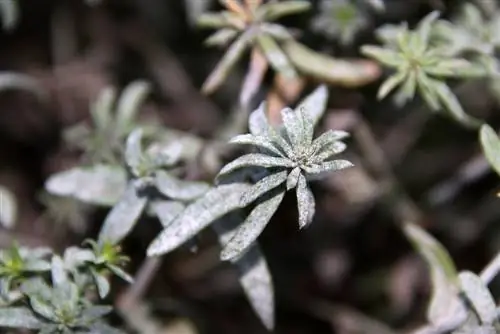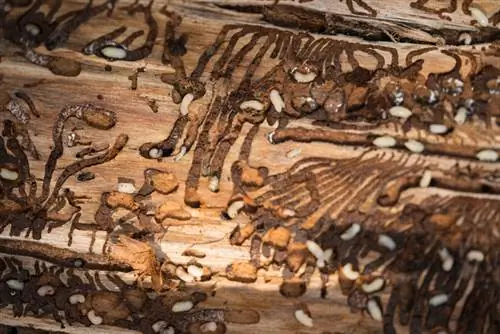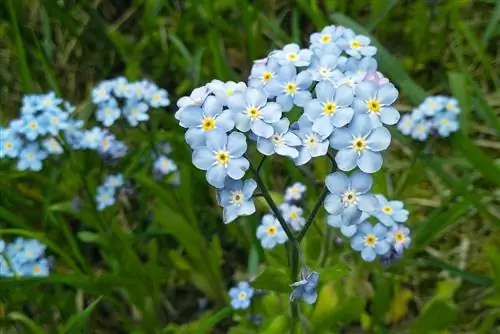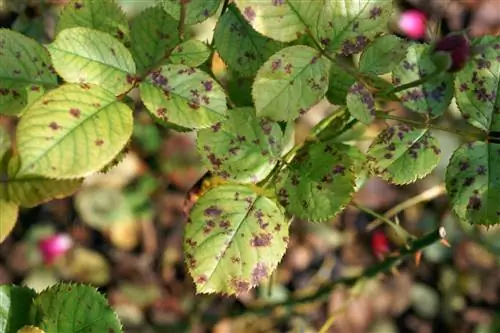- Author admin [email protected].
- Public 2023-12-25 17:45.
- Last modified 2025-01-23 11:22.
Asters impress in autumn with the contrast of colorful flowers and dark green foliage. However, if the leaves get whitish spots, the splendor is quickly over. The cause of this is powdery mildew, which unfortunately occurs frequently on autumn asters.

How do I effectively combat powdery mildew on asters?
To combat powdery mildew on asters, cut off infected plant parts generously, disinfect your secateurs and dispose of the plant parts in household waste. Then spray the asters with a mixture of one part whole milk and eight parts water.
How do I recognize powdery mildew on asters?
Powdery mildew is a fungal disease that covers asters with awhitish coating. The first signs of infestation appear on the top of the leaves. The fungus then spreads to stems and flowers. The risk of infection for autumn asters is particularly high in sunny weather and drought. It often happens that the fungal disease appears from one day to the next. Therefore, caring for asters includes daily checks so that you can detect mildew infestation at an early stage.
What can I do against powdery mildew infestation on asters?
If there is an infestation with mildew,immediate action is the most important measure. Proceed as follows:
- Cut off all infected plant parts generously.
- Disinfect the secateurs (€14.00 on Amazon) after each cut so that they do not become a vector for the fungal disease.
- Do not hesitate to completely remove severely infested plants.
- Infected plants (parts) do not go into the compost, but into the household waste.
After cutting, spray the asters with a home remedy made from one part whole milk and eight parts water. Repeat the treatment after a few days.
How can I protect asters from mildew?
The best protection against mildew on asters is tocreatein the bed or pot. This includes measures such as:
- Never let the soil dry out completely. Mildew doesn't like moisture.
- Do not plant asters too close so that air can circulate between the perennials.
- Mulching the bed.
- Divide autumn and summer asters every three to five years and plant them in a new location.
- If necessary, sort out bare, older plants.
- Fertilize autumn asters sparingly.
- Water plants only in the root area - not over the leaves.
Tip
Use mildew-resistant varieties
In order to reduce the risk of infection with powdery mildew, it is recommended to use aster varieties that are less frequently attacked by fungus. For cushion asters, for example, this is the “Dwarf Sky” variety. Among the smooth-leaf asters, “Autumn Snow” is considered resistant to powdery mildew. Lovers of rough-leaf asters, for example, should choose the “Barr’s Pink” variety.






